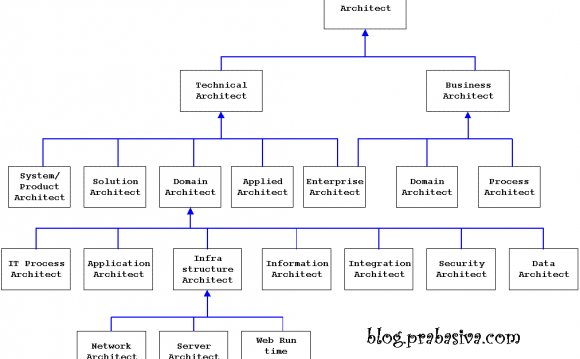
Your goal is a noble one, and a common reason for others to enter into the field of architecture as well. As an architect, the “type” of job you have could refer to the type of constructions you work on or your specific capacity within a given project. For example, you might be a project manager, a designer, or a business owner. Those are all job roles. You may even be surprised by just how much those job roles differ. Each role has a very unique description, and you may find yourself drawn more to some than others. It is also possible that throughout your career you will work in a variety of capacities.
But you also could define your work by the buildings you create. Let’s take a look at some common paths in the field of architecture and some of the different types of architects:
Residential Architect

Residential architects focus most of their efforts on constructing beautiful private dwellings for homeowners. While a lot of the houses we see in neighborhoods around the world are designed identically or close to it (some people call these “cookie cutter” houses), many neighborhoods allow for customized homes with unique styles.
As a residential architect, you would be working with private clients to help them to design the home of their dreams. You would need to be cognizant of all local building codes as well as relevant neighborhood covenants (some neighborhoods are very strict, while others are not). The home you design will have to conform to all of these local regulations but also fulfill the form and function of a beautiful and inviting home environment for your client. While you probably have not seen nearly as many examples of custom homes as you have of cookie-cutter houses, odds are you have seen at least a few. Inside and out, they beautify the world and the lives of their inhabitants and neighbors.
Many of the world’s most famous examples of beautiful architecture were actually commissioned as private residences for homeowners. For example, Frank Lloyd Wright, the famous American architect, designed numerous homes in Oak Park, IL and throughout the country. These houses stand today as some of the most well-known examples of American architecture, but they were originally built to serve the needs of private clients. Many are still lived in today, while others are open for tours. Perhaps you could become the next Frank Lloyd Wright. Or maybe you will discover another style entirely that is completely different. Architecture is all about finding your own personal vision and bringing it to life—and helping your clients to do the same.
Commercial or Public Architect
If you focus on this role, you may specialize in larger ventures for businesses or government entities, erecting public buildings such as shopping malls, libraries, government facilities, and more. There are also many famous examples of famous public structures, all the more so since so many people are able to experience them. Think back over your life, and you will probably remember examples of impressive train stations, airports, and other public facilities you walked through. Maybe you only spent a few hours in some of these locations, but the memories can stick with you for years to come.
Elegant public buildings help to not only beautify facilities and make experiences more pleasant and enjoyable, but also to fulfill a practical purpose. A well-designed shopping mall makes it easier for buyers to find what they are searching for. A well-designed airport makes it easy and intuitive to find the right gates and to locate shops and restaurants in the meantime.
Public building architecture also helps to define society. Throughout history, different types of architecture have come to symbolize different ideas. For example, in America, many public buildings, particularly government buildings, are built in the neoclassical style, which in turn imitates the buildings found in ancient Greece. This is one way that the buildings in the U.S. capital express the ideas of democracy.
Another good example is the many public buildings built in the style of Brutalism. This style, while cold and austere, had behind it a philosophy of community-based living and sharing. Every public building espouses ideas about how we should live. As an architect of public buildings, you help to instill these concepts in the culture with your work.
Industrial Architect
If you are interested in working on industrial projects, I suggest you check into civil engineering as a major instead of architecture. It is true that there is an architectural element to industrial projects. In fact, architecture can be a major component of these structures, but they are far more elaborate to design than other types of public or private buildings.
Because of this, civil engineering is a more appropriate major for industrial projects like hydroelectric dams, bridges, and other technical projects. These projects encompass advanced knowledge of science and engineering. Without that knowledge, you cannot create structures which are safe and which are able to fulfill technical functions as well as be aesthetically pleasing to the eye. There is also the issue of qualifying for the appropriate certifications to be allowed to work on these projects, without which you cannot hope to proceed.
Should you get a civil engineering degree if you are planning only on working on public buildings (that are not technical in nature) and private residences? There is no particular reason to, unless you have no options. A civil engineering degree is overkill for non-technical projects, and will present you with a great many challenges along the way in terms of coursework and certifications. You will also spend less time on artistic design principles when you are studying how to build dams and bridges. As such, it is a good idea to only major in civil engineering if you are aiming at erecting industrial structures.
Landscape Architect
This type of architecture focuses on outdoor areas. If you go into this specialized field, you might design parklands, gardens, and lawns surrounding college campus buildings and other public destinations. Landscape architects may also work with homeowners and other private parties to design compelling outdoor areas. You might even be involved with the development of golf courses or similar recreational spots.
Building structures can be a part of this job, even though you are working with outdoor areas. For example, many landscaping jobs entail erecting gazebos and other outdoor structures such as follies. Unlike residential architects and public and industrial architects, however, you will be doing a lot of work directly with trees, plants, and other living materials. As such, your body of knowledge will have to go beyond simple construction. You will have to understand aspects of horticulture, and know how you can integrate living growth into your settings. A well-designed landscape will incorporate plants in a system that is beneficial to them and allows them to thrive.
See also:RELATED VIDEO












